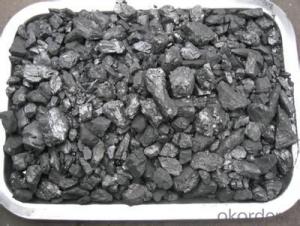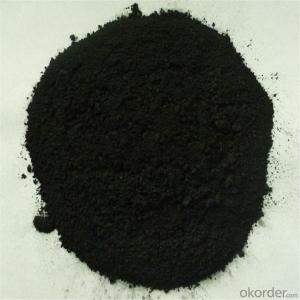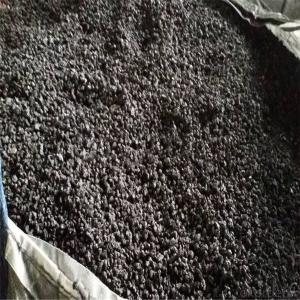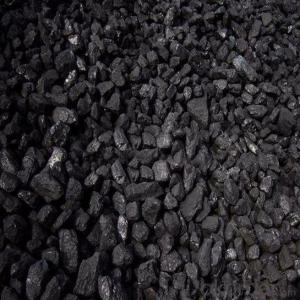Recarburizer low S low N carbon additive carbon riser
- Loading Port:
- Dalian
- Payment Terms:
- TT OR LC
- Min Order Qty:
- 10 m.t
- Supply Capability:
- 500000 m.t/month
OKorder Service Pledge
OKorder Financial Service
You Might Also Like
Specifications of Carbon Raiser:
- F.C 90-95%
- Low sulfur
- ISO 9001
- Calcined petroleum coke
FC 90-95-99% carbon raiser for steelmaking/Calcined anthracite / graphite based / petroleum coke recarburizer
Recarburizer carbon rasier points steelmaking recarburizer (People's Republic of China ferrous metallurgy industry standards, YB / T 192-2001 steelmaking recarburizer) and cast iron with carbon agent, and other materials are also useful to add carbon rasier such as brake pads with additives, as friction materials. carbon rasier belong plus steel, iron by carbon materials. carbon rasier quality is essential for the production of high-quality steel auxiliary additives.
Carbon rasier there are a variety of raw materials, production processes are different, there are wood carbons, carbon-based coal, coke, graphite, etc., of which there are many small species under various categories. High quality carbon agent generally refers to after graphitized carbon agent under high temperature conditions, the arrangement of carbon atoms in graphite morphology was, so called graphitization. Graphitization can reduce the content of impurities recarburiser improve recarburizer carbon content and reduce sulfur content.
Recarburizer Features:
- Medium particle size, porosity, large, absorption speed.
- Using petroleum coke firing temperature, the chemical composition of pure carbon, sulfur, harmful ingredients minimal absorption rate.
- Product good degree of graphitization, improve the original form of liquid iron nuclear capability. Ductile iron ball to increase the number of ink in breeding, increasing the graphite furnace liquid iron nuclei. Refined, uniform distribution of the graphite in the cast.
- excellent performance and stability.
Specifications (%): | ||||||
Grade | F.C | Ash | V.M | Moisture | S | Size |
CR-95 | ≥95 | <4< span=""> | <1< span=""> | <1< span=""> | <0.3< span=""> | 0-30mm |
CR-94 | ≥94 | <4< span=""> | <1< span=""> | <1< span=""> | <0.3< span=""> | |
CR-93 | ≥93 | <6< span=""> | <1< span=""> | <1< span=""> | <0.4< span=""> | |
CR-92 | ≥92 | <7< span=""> | <1< span=""> | <1< span=""> | <0.4< span=""> | |
CR-91 | ≥91 | <8< span=""> | <1< span=""> | <1< span=""> | <0.4< span=""> | |
CR-90 | ≥90 | <8.5< span=""> | <1.5< span=""> | <2< span=""> | <0.4< span=""> | |
Carbon rasier Packing:
- Carbon rasier waterproof bags 25KG / bag, plus tons of bags or trays
- Also provide suitable package according to your needs.
- Q:Does iron have more carbon or more steel?
- Iron has a high carbon contentThe main difference is that the pig iron, wrought iron and steel carbon content, carbon content of more than 2% of iron is iron;
- Q:How does carbon impact the fertility of soil?
- Soil fertility relies heavily on carbon, which serves as the foundation for organic matter. Organic matter, derived from decaying plant and animal residues, enhances the soil's structure, nutrient-holding capacity, and water retention. This results in improved support for plant growth and microbial activity. Not only does organic matter supply carbon, but it also provides nutrients to plants through the process of decomposition. Microorganisms, fungi, and bacteria decompose organic matter and release nutrients like nitrogen, phosphorus, and potassium into the soil. These nutrients become available for plants to absorb. Additionally, carbon in organic matter binds soil particles, preventing erosion and improving soil structure. Furthermore, carbon plays a crucial role in water management for plants. It acts as a sponge, absorbing and retaining moisture, which helps sustain plant growth during dry periods. Carbon also fosters the growth of a diverse and healthy microbial community in the soil, including beneficial bacteria and fungi. These microorganisms contribute to nutrient cycling, disease suppression, and plant nutrient uptake, further enhancing soil fertility. However, it is important to avoid excessive carbon inputs or improper land management practices, as they can negatively affect soil fertility. An imbalance in carbon availability can lead to nitrogen immobilization, where microorganisms consume nitrogen for their own growth, depriving plants of this essential nutrient. Additionally, high carbon content can create anaerobic conditions, limiting oxygen availability for plant roots and beneficial soil organisms. To ensure optimal soil fertility, it is crucial to maintain a balanced carbon-to-nitrogen ratio and adopt sustainable land management practices. Carbon is an indispensable component for maintaining soil health by improving structure, nutrient availability, water retention, and microbial activity.
- Q:How does carbon monoxide affect air quality and human health?
- Carbon monoxide (CO) is a colorless, odorless gas that can have detrimental effects on both air quality and human health. It is primarily released into the atmosphere through incomplete combustion of fossil fuels and biomass burning. In terms of air quality, high levels of carbon monoxide contribute to the formation of ground-level ozone and smog, which can impair visibility and cause respiratory issues. When it comes to human health, carbon monoxide is particularly concerning as it binds to hemoglobin in our red blood cells, preventing oxygen from being delivered to vital organs and tissues. This can lead to symptoms such as headaches, dizziness, confusion, and in severe cases, even death. Individuals with cardiovascular and respiratory conditions, as well as unborn babies and the elderly, are especially vulnerable to the harmful effects of carbon monoxide exposure. Therefore, proper ventilation and the use of carbon monoxide detectors are crucial to prevent its accumulation and protect both air quality and human health.
- Q:How does carbon impact the prevalence of tropical storms?
- The prevalence of tropical storms is greatly influenced by carbon, specifically carbon dioxide (CO2) emissions. Human activities like burning fossil fuels, deforestation, and industrial processes have led to an increase in atmospheric CO2 levels, resulting in global warming. This phenomenon of rising global temperatures has various implications for the formation and intensity of tropical storms. To begin with, warmer temperatures lead to higher levels of moisture in the atmosphere due to increased evaporation of seawater. Moisture is crucial for the development and sustenance of tropical storms as it provides the necessary fuel. With more moisture available, the potential for tropical storms to form and strengthen is enhanced. Moreover, rising global temperatures cause tropical oceans to expand, providing a larger area for tropical storms to form and intensify. This expansion allows for greater energy exchange between the ocean and the atmosphere, further enhancing the potential for storm development. Additionally, elevated levels of CO2 contribute to ocean acidification, which negatively affects marine ecosystems like coral reefs. Coral reefs act as natural barriers that protect coastal areas from storm surges and waves generated by tropical storms. However, the acidification of oceans weakens and destroys these reefs, leaving coastal regions more vulnerable to storm impacts. Lastly, carbon emissions causing climate change alter atmospheric and oceanic circulation patterns, which can affect the movement and tracks of tropical storms. Changes in wind patterns and ocean currents may cause storms to deviate from their usual paths, leading to increased uncertainty and potential impacts on regions not typically prone to these events. In summary, carbon emissions and the resulting global warming have significant effects on the prevalence of tropical storms. Increased moisture content, expanded warm ocean areas, weakened coastal defenses, and altered storm tracks are all consequences of rising carbon levels, ultimately contributing to more frequent and intense tropical storms.
- Q:What is the carbon footprint?
- The carbon footprint is a measure of the total greenhouse gases, specifically carbon dioxide (CO2), that are released into the atmosphere due to human activities. It quantifies the impact individuals, organizations, or countries have on the environment by contributing to climate change. This impact encompasses both direct emissions from burning fossil fuels for transportation, heating, and electricity, as well as indirect emissions from the production and transportation of goods and services we consume. Measured in units of carbon dioxide equivalent (CO2e), the carbon footprint serves as a vital tool for assessing and managing our environmental influence. By comprehending and diminishing our carbon footprint, we can alleviate climate change and strive for a more sustainable future.
- Q:Is there a line cutting of carbon fibers?
- Having the cutting of carbon fibers by wire cutting.Carbon fiber products: carbon fiber reinforced one-way plate, the molding process is to impregnated the carbon fiber resin in the mold curing and continuous pultrusion. Using high quality carbon fiber material and good basic resin, carbon fiber board has good tensile strength, corrosion resistance, seismic resistance, impact resistance and other good performance.The carbon fiber unidirectional plate can give full play to the strength and the elastic modulus of the carbon fiber, and can avoid the resin curing stage of the carbon fiber unidirectional fabric during construction, and has high strength utilization efficiency and convenient construction.
- Q:How are fossil fuels formed from carbon?
- Fossil fuels are formed from carbon through a natural process that takes millions of years. The process begins with the remains of plants and animals that lived millions of years ago. These remains, which contain carbon, get buried under layers of sediment in oceans, swamps, and other bodies of water. Over time, the pressure from the layers of sediment and the heat from the Earth's crust cause a process called diagenesis to occur. During diagenesis, the organic matter in the remains undergoes chemical changes, transforming it into a substance known as kerogen. As more layers of sediment continue to accumulate, the temperature and pressure increase further. Eventually, the kerogen undergoes a process called catagenesis, where it is heated to even higher temperatures. This causes the kerogen to break down and transform into liquid and gaseous hydrocarbons, which are the main components of fossil fuels. The liquid hydrocarbons form what is known as crude oil or petroleum, while the gaseous hydrocarbons form natural gas. Both of these fossil fuels can be extracted from the Earth's crust through drilling. In summary, fossil fuels are formed from carbon through a complex and lengthy process involving the burial, pressure, and heat of organic matter over millions of years. This process transforms the carbon-rich remains into hydrocarbons, which become the valuable resources that we use as fossil fuels today.
- Q:What is carbon neutral manufacturing?
- Carbon neutral manufacturing refers to the process of manufacturing goods while minimizing or offsetting the carbon emissions associated with the production. It involves reducing greenhouse gas emissions at every stage of the manufacturing process, from sourcing raw materials to the disposal of finished products. This can be achieved through various measures such as energy efficiency, the use of renewable energy sources, implementing sustainable practices, and investing in carbon offset projects. To become carbon neutral, manufacturers typically start by conducting a detailed assessment of their carbon footprint, which involves identifying and quantifying all the emissions generated in their operations. This includes direct emissions from manufacturing processes, as well as indirect emissions from the energy sources they use. Once the emissions are measured, manufacturers can develop strategies to reduce their carbon footprint. Some common methods of achieving carbon neutrality in manufacturing include optimizing energy consumption by using efficient equipment and technologies, adopting renewable energy sources like solar or wind power, and implementing waste reduction and recycling programs. Additionally, manufacturers can invest in carbon offset projects, which are initiatives that reduce or remove greenhouse gas emissions from the atmosphere, such as reforestation or renewable energy projects. By implementing these measures and offsetting any remaining emissions, manufacturers can achieve carbon neutrality. This not only helps combat climate change by reducing the overall carbon footprint but also demonstrates a commitment to sustainability and environmental responsibility. Carbon neutral manufacturing is an important step towards transitioning to a low-carbon economy and creating a more sustainable future.
- Q:How does carbon affect the formation of acidification in lakes?
- Lakes undergo acidification due to the significant role played by carbon dioxide (CO2). Human activities, such as burning fossil fuels, release carbon dioxide into the atmosphere. This carbon dioxide can then be absorbed by lakes, resulting in the formation of carbonic acid (H2CO3), a weak acid. When carbonic acid interacts with water, it dissociates into hydrogen ions (H+) and bicarbonate ions (HCO3-). The increase in hydrogen ions causes a decrease in pH levels, making the water more acidic. This process is commonly referred to as acidification. The acidification of lakes can have detrimental effects on aquatic ecosystems. It negatively impacts the physiology and behavior of various species, including fish, amphibians, and invertebrates. Furthermore, the eggs and larvae of these organisms can be damaged by acidic waters, hindering their growth and survival. Acidification also has the potential to disrupt the composition and abundance of phytoplankton, which are vital for maintaining the overall health of the ecosystem. Additionally, high levels of acidity can result in the leaching of toxic metals, such as aluminum, from the surrounding soil and rocks. These toxic metals then dissolve in the water, posing an additional threat to aquatic organisms. Acidification can also disrupt the nutrient cycles in lakes, ultimately affecting the availability of essential nutrients for plants and animals. To summarize, the presence of carbon dioxide in the atmosphere contributes to the acidification of lakes when it is absorbed by water. This acidification has a range of negative impacts on the aquatic ecosystem, including altered physiology, impaired reproduction, and disrupted nutrient cycles. It is imperative to reduce carbon emissions and mitigate the effects of acidification to safeguard the health and diversity of lake ecosystems.
- Q:What is sintered carbon?
- The process of choosing appropriate process and operating systems in accordance with the internal laws of the sintering process, the use of modern scientific and technological achievements, strengthening sintering production process, to obtain advanced technical and economic indicators, to ensure the realization of high yield, high quality and low consumption. The production process has the raw materials, against the ash, mixing, crushing and screening, crushing and screening solvent fuel proportioning, mixing, ignition, exhaust ventilation cooling, sintering, crushing and screening, dust and other aspects.
1. Manufacturer Overview |
|
|---|---|
| Location | |
| Year Established | |
| Annual Output Value | |
| Main Markets | |
| Company Certifications | |
2. Manufacturer Certificates |
|
|---|---|
| a) Certification Name | |
| Range | |
| Reference | |
| Validity Period | |
3. Manufacturer Capability |
|
|---|---|
| a)Trade Capacity | |
| Nearest Port | |
| Export Percentage | |
| No.of Employees in Trade Department | |
| Language Spoken: | |
| b)Factory Information | |
| Factory Size: | |
| No. of Production Lines | |
| Contract Manufacturing | |
| Product Price Range | |
Send your message to us
Recarburizer low S low N carbon additive carbon riser
- Loading Port:
- Dalian
- Payment Terms:
- TT OR LC
- Min Order Qty:
- 10 m.t
- Supply Capability:
- 500000 m.t/month
OKorder Service Pledge
OKorder Financial Service
Similar products
New products
Hot products































